-
Administrator

Article: Z-28 Number One
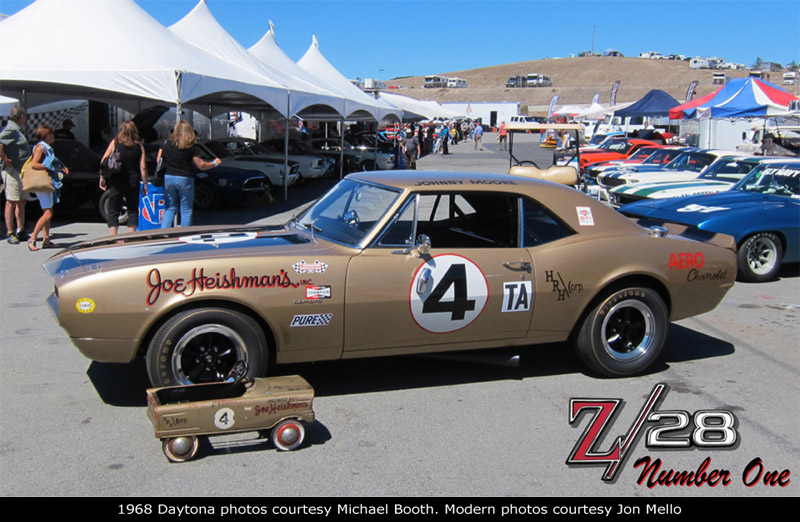
On December 29, 1966, the very first production Z-28 Camaro rolled off the assembly line. This is that car.
-
Administrator

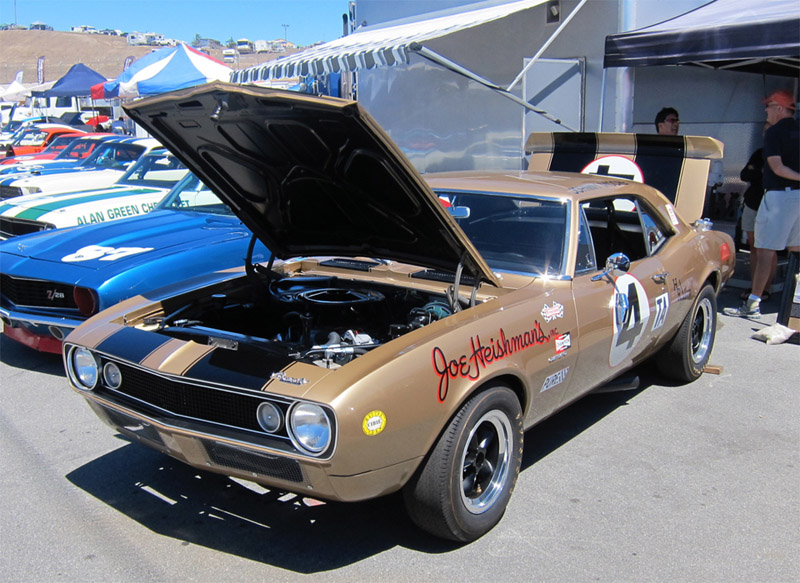
Painted Granada Gold, the Z-28 was shipped to Aero Chevrolet, in Alexandria, VA, who then sent it on to local VW/Porsche dealer Hugh Heishman. Heishman had ordered the car specifically for road racing purposes, with the 1967 Daytona 300 mile Trans-Am race, a support to the Daytona 24 Hour event, as his immediate goal.
The Z28 arrived at Heishman’s shop in January, and the Daytona race was held on February 3rd. Heishman had his dealership service manager Johnny Moore prepare the car for competition, to SCCA A/Sedan and Trans-Am specifications. Moore would also be its primary driver, with co-driver duties performed initially by Jim McDaniel, and in later events by Jim Murphy.
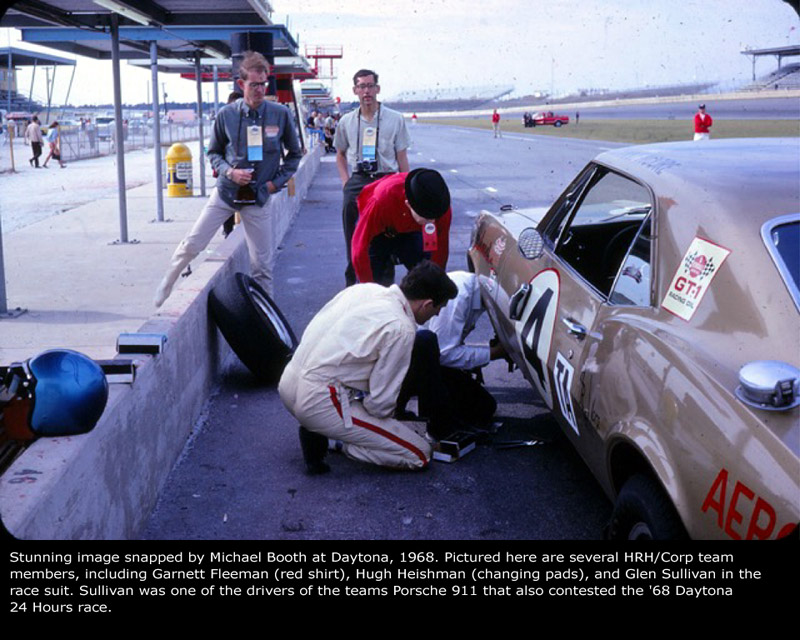
The Camaro retained its factory Granada Gold paint. In fact, this was the color ordered by Heishman, who’d also go on to run a gold colored Porsche 911-R. It was fitted with magnesium 15 x 7 American Racing Wheels, large capacity gas tank with fuel filler exiting through the passenger rear quarter, and very basic 3-point bolt-in roll cage, along with all the typical road race modifications. With its gold paint combined with black and red lettering, and red bordered door roundals, the Camaro looked absolutely beautiful, and a credit to both its owner Hugh Heishman and its builder Johnny Moore.
The RPO-Z-28 model was created by Chevrolet specifically for competition in the SCCA Trans-Am series, whose engine rules stipulated a maximum 5,000cc. Thus, the companies 327 cu.in small block with 4 inch bore was fitted with a 283 crank, to produce 302.4 cu.in. The Z-28 would eventually become merely a branding exercise for sporty Camaros, but it was originally created specifically for competition in the Trans-Am series.
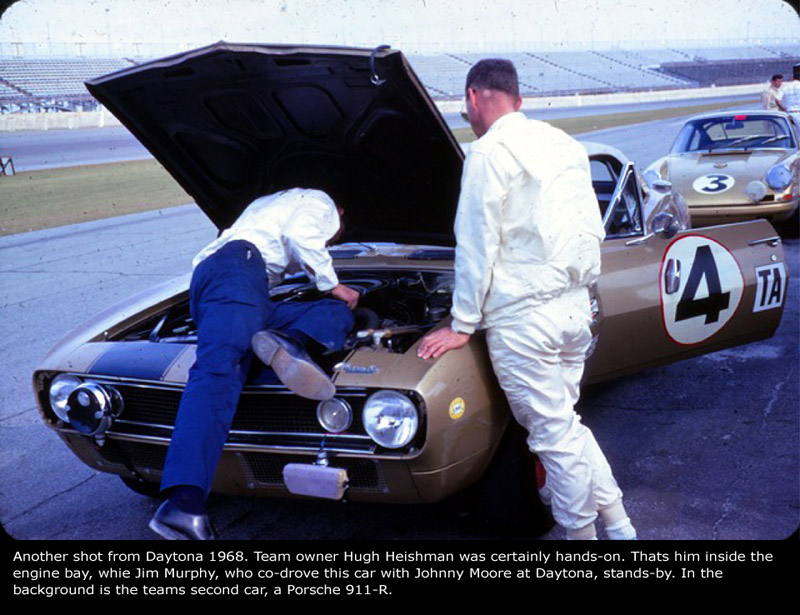
Following Daytona, Heishman’s HRH/Corp team next ran the Camaro in the 4 Hour Trans-Am race at the Sebring 12 Hour event. After Sebring, Moore drove the car to victory at Cumberland, MD, marking this the first ever race win in an SCCA National event for a Camaro. Among its other outings were the 1967 Mid-Ohio, Bryar, and Marlboro Trans-Am races, while it also contested the 1968 Daytona 24 Hour race, in which there was a Trans-Am class as the opening round of that years series.
Following Daytona 1968, Heishman retired the Camaro and replaced it with a new 1968 Z28 (note that 1967 was the only year Chevrolet included a hyphen in the Z-28 name, between the Z and the 28. From 1968 it became simply Z28), as he was unsure if the SCCA would allow the new-for-1968 cross ram inlet manifold and 4-wheel disc brakes to be fitted to ’67 model cars. So the drivetrains were switched between the two cars, and the rest of the racing equipment pulled from the ’67, which was then converted for road duties for the first time. Its new owner was actually the person who delivered mail to their race shop. He wanted all traces of the Z-28s race history removed, and he also wanted the car painted in the latest Rally Green.
-
Administrator

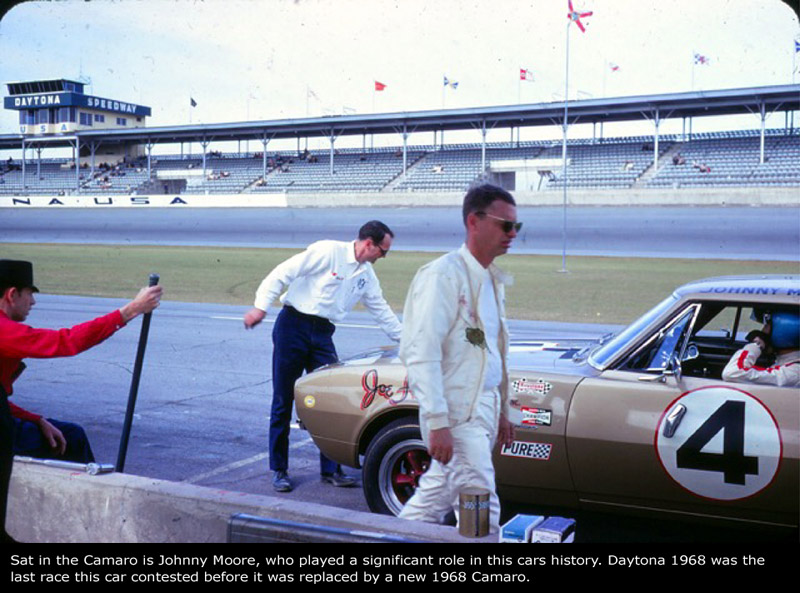
Whats interesting about this Camaro is that Heishman always intended to convert it back to a road car, and was careful to leave the bodywork as stock as possible. It appears even the inner fender lips were left untouched, rather than rolled for better tire clearance. But oddly enough, while it was standard practice to run the fuel filler for the gas tank up through the trunk lid (which would have necessitated only in replacing the trunk lid), Heishman instead opted to have it exit initially through the passenger rear quarter, before swapping to the drivers rear quarter after the car hit the wall at Daytona in 1967.
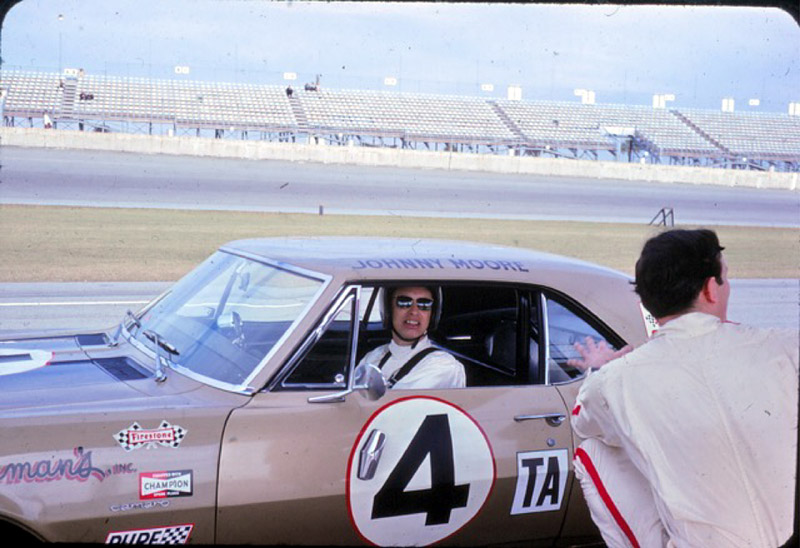
Fast forward a few decades to 1999, and after many years and several owners, Z-28 Camaro number 1 came into the possession of Camaro racing historian, Jon Mello, of California. Jon, at the time, owned a nice Mountain Green 1967 Z-28, and was considering the idea of buying a second Camaro as a project to restore. On request for a friend who was wanting some engine parts for a Camaro he was restoring, Jon went to look at a ’67 Camaro whose owner was selling parts off with plans to hot rod the car. “I did not go to look at a '67 Z-28”, explains Jon, “I went to look at a '67 Camaro that happened to have a 327 4bbl, Saginaw 4-speed and 12 bolt that were all from a '68 Camaro and dated one year later than the car itself. This is referred to as an L30/M20 combination and my friend was restoring a '68 L30/M20 car that was closely dated to these components.
“When I popped the hood and saw the covered over cowl plenum air cleaner hole in the firewall in conjunction with the 4P code and the timeframe of when the car was built, I knew that the possibility was there that the car "could be" a Z-28. I even mentioned this to the owner and we popped out the backseat to see if we might find some kind of factory paperwork under the seat springs. We found no paperwork but did see evidence of the bolt-in roll bar that used to be there. I wasn't able to actually prove anything until after I owned the car”. Jon told the owner he’d be interested in buying the Camaro, made an offer, and a couple of months later, got a call to say the car was his.
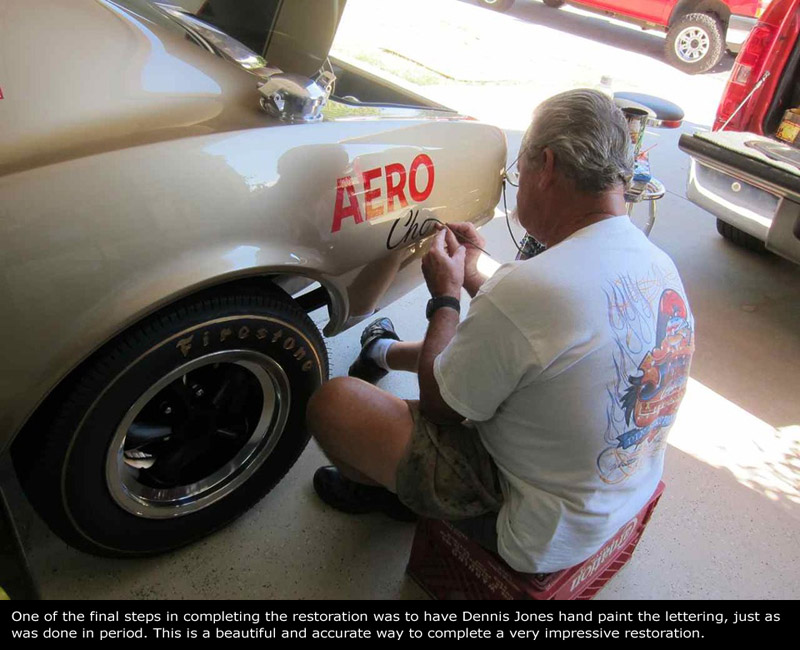
Now, it wasn’t until Jon started delving that he came to the conclusion this was a very early build, and on looking through his copy of Michael Lamm’s ‘The Great Camaro’ book, he noted a photo of the Johnny Moore driven Z-28, and several details matched between the car he had, and the car Moore raced. Eager to gain more info, Jon decided to try and contact Johnny Moore in Virginia, and lucked out, when his first call was answered by Johnny’s wife. Jon and Johnny chatted about the Camaro, and the evidence was stacking up, but Johnny suggested speaking to the cars original owner in 1967, Hugh Heishman. On eventually being able to speak with Huge, Jon was in luck once more, as Hugh still had the original sales invoice from Aero Chevrolet, and sure enough, it was a match! Jon Mello owned the very first Z-28 to roll off the assembly line.
-
Administrator

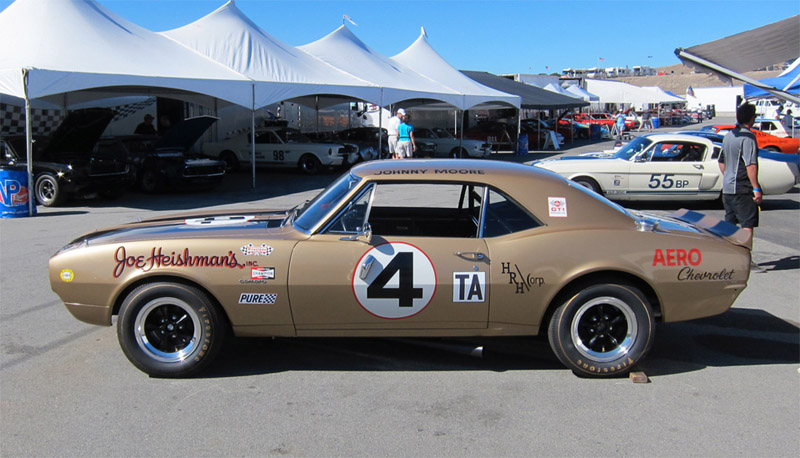
“I was fortunate enough that Mr. Heishman sent me the original copy of the sales invoice for the car as well as providing me with a notarized “Certificate of Authenticity” for the car”, explains Jon, “stating it was the one he bought new. I also contacted Michael Lamm and received from him a copy of the document he received from Vince Piggins (who’d headed Chevrolet’s back-door racing program at the time) way back in the ‘70s when he interviewed Vince for his book. You could clearly see where the car listed as Z-28 number 1 was delivered to Aero Chevrolet and was purchased by a local VW dealer (which indeed Mr. Heishman was) and that it was to be driven by Johnny Moore at Daytona”.
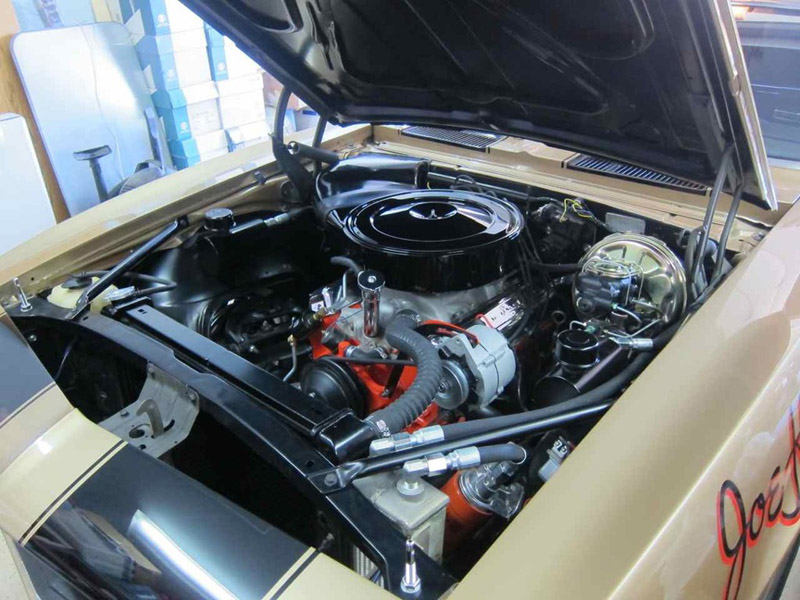
So, how did this car which was first sent to Virginia, end up way out in California? Hugh recalls that the letter carrier who bought it off him moved to California only a year or so after buying the Camaro, and took it with him. And sure enough, the Camaro still had its black California license plates, which just happen to date back to 1969. You get the feeling fate was playing its hand here. This car founds its rightful owner in Jon Mello.
Given his passion for racing history, Jon made the decision to restore the Camaro back to its early Trans-Am guise, rather than as it rolled off the assembly line in stock form. Jon chose to pin-point the 1968 Daytona 24 Hour race in which to accurately restore the car, as he liked the style of the roll cage the car wore in this race, which differed to that used during 1967. He set about a stunning restoration, accurate right down to the hand painted lettering applied by Dennis Jones, and the door mounted lights to illuminate the race numbers during the night. Jon also had the fuel filler relocated to the drivers rear quarter. Jon explains; “I made the car to replicate the '68 Daytona race, however I did not put the driving lights up front as I didn't like the cluttered look. The roll bar design changed slightly for that race and I preferred it over the previous design which had a bar going forward to the passenger foot-well and no visible rearward bars for support”.
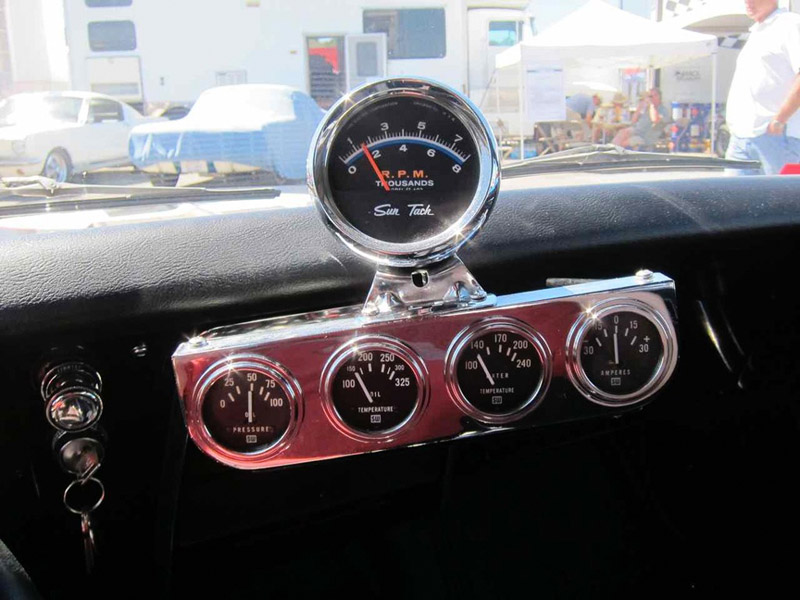
Although Trans-Am rules allowed for wheel widths up to 8 inches wide on Over-2 class cars such as this, Heishman’s HRH/Corp team only ever ran this car with 7 inch wide wheels, and as such, Jon has fitted it with 7 inch wheels. One of the homologated parts for the 1967 Z-28 Camaro was its small deck lid mounted rear spoiler, designed to aid rear downforce at speed. But simply buying one of these in 1967 was not as simple as you’d think. “As far as spoilers”, says Jon, “there was a drawing made, a part number assigned and they even had a page showing the spoiler in the factory assembly manual. With that being said, there are no documented examples of any 1967 Camaro with a factory installed spoiler and I'm not even aware of any sales receipt for a spoiler sold over the parts counter in '67. It does not show up in the parts book in '67, but does show up in part lists that were available to racers”.
-
Administrator

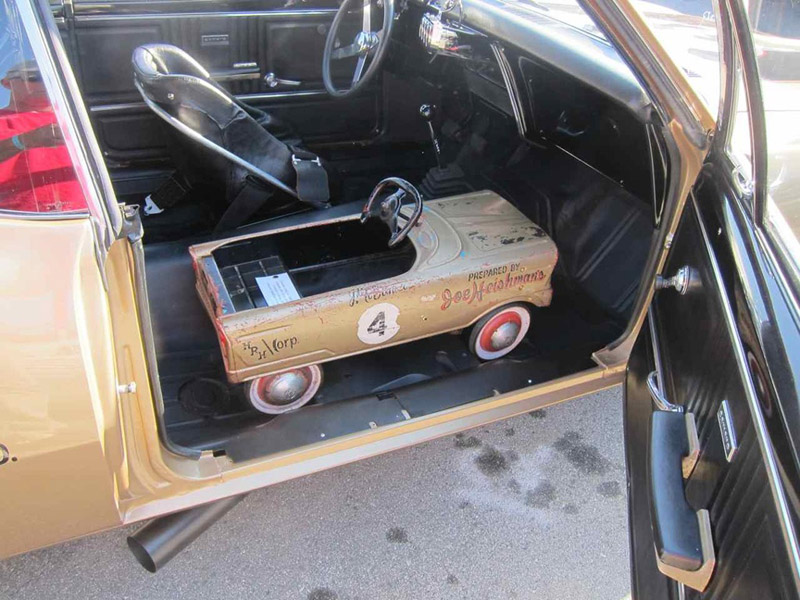
So where did Camaro racers in 1967 get their spoilers from? It would appear a selected few may have got them through GM, but most came from privately made moulds. “This car did not have a spoiler on it when originally built”, explains Jon. “No '67 Camaro did, although some were made available to race teams or were built from factory blueprints. My car did not have a spoiler on it at its first race but did at its second (Sebring). I don't know if Hugh Heishman made his own or what”.
Jon gave the Camaro its public unveiling at the 2015 Monterey Historics, where it was displayed with the Historic Trans-Am racing group in which he is involved. Not surprisingly, it drew a crowd all weekend, and has further raised the bar in historical race car accuracy and correct presentation, and is truly a credit to Jon and his efforts. Sadly, Johnny Moore has since passed away, but his daughter Kelly Wick was at Monterey, and brought along a pedal car that has been in her family for many years, and which was painted and lettered by the same guy who originally painted the Camaro.
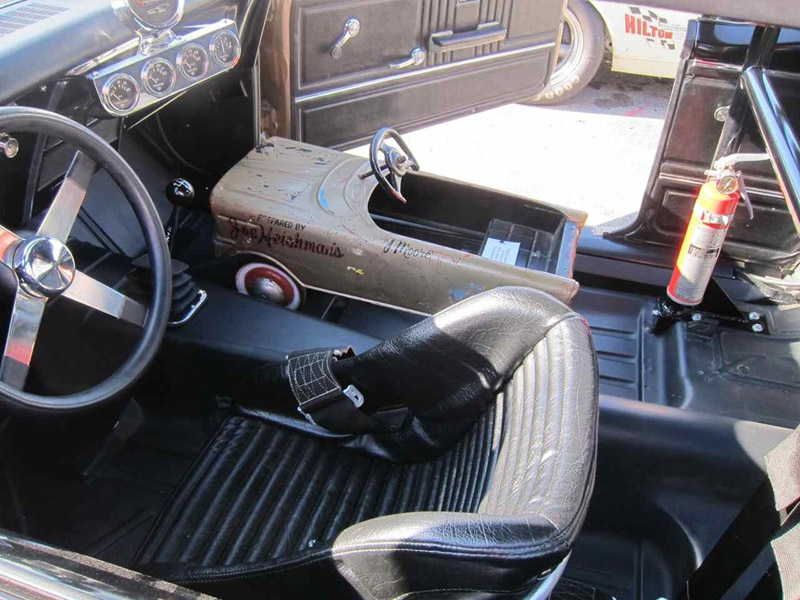
Although this, the very first Z-28 off the assembly line, was originally created as a stock road car, it was used on the race track before it was ever used on the road. It was one of just four Camaros to contest the Daytona 300, the first Trans-Am race in which the model was eligible and available, and for the series the Z-28 was created for. It was also the first Camaro to win an SCCA National. Had someone other than Jon Mello bought and restored this car, its possible it might now look just as it did when it first rolled off the assembly line, rather than as it raced. We definitely think it went to the right owner, who restored it the way it should have been; for its racing history is as significant as its chassis number, and the two are forever entwined.
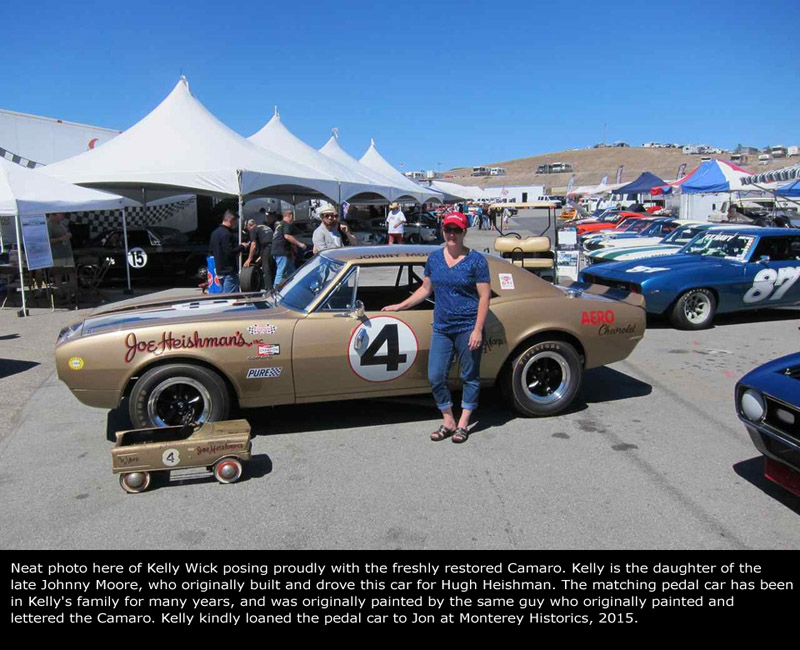
Article courtesy Muscle Car Digital Magazine.
-
Administrator

Cool article on the MSN.com site of Jon's Z28, with some really beautiful photos. Check it out: http://www.msn.com/en-us/autos/enthu...UVn?li=BBnb4R5
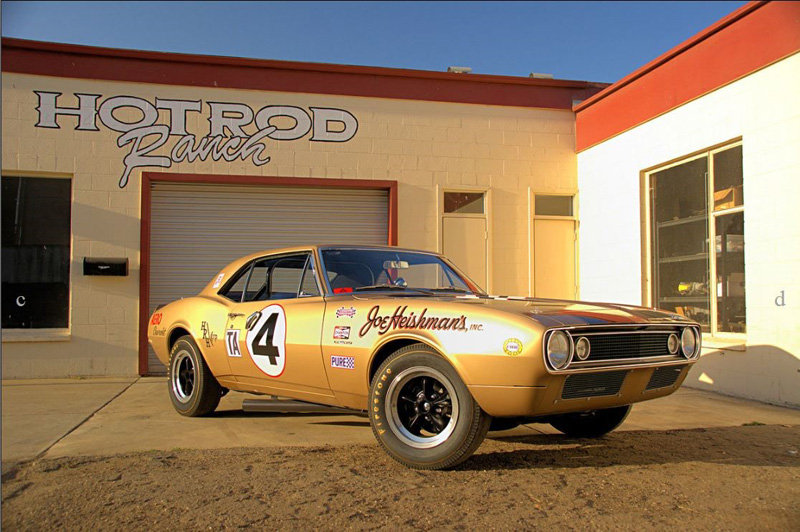
 Posting Permissions
Posting Permissions
- You may not post new threads
- You may not post replies
- You may not post attachments
- You may not edit your posts
-
Forum Rules
